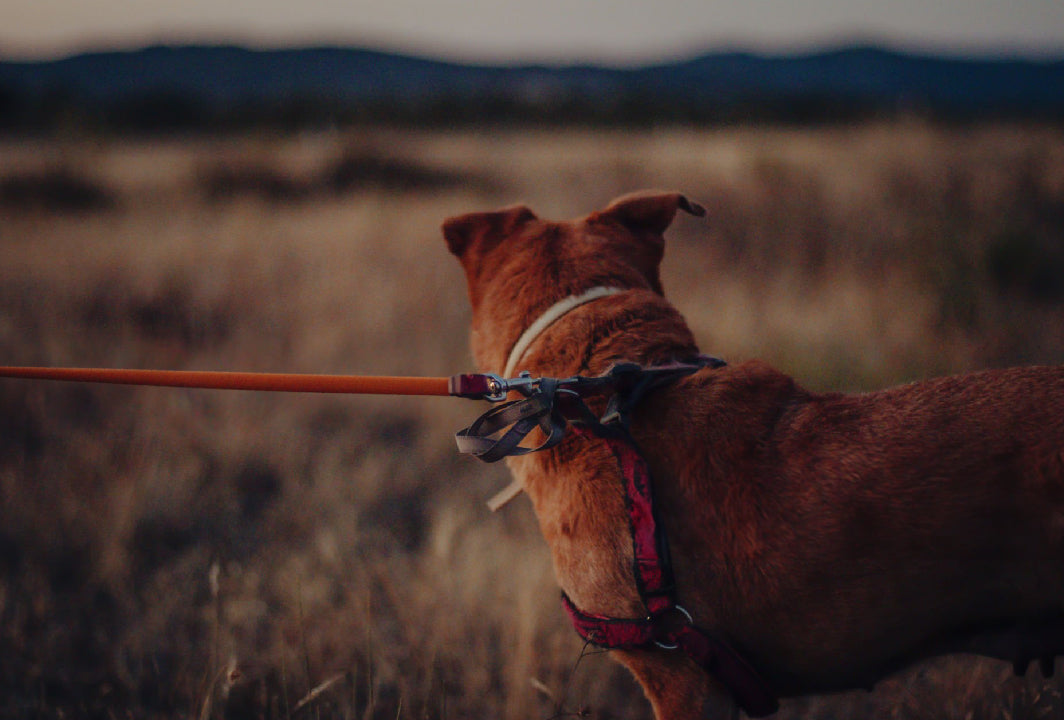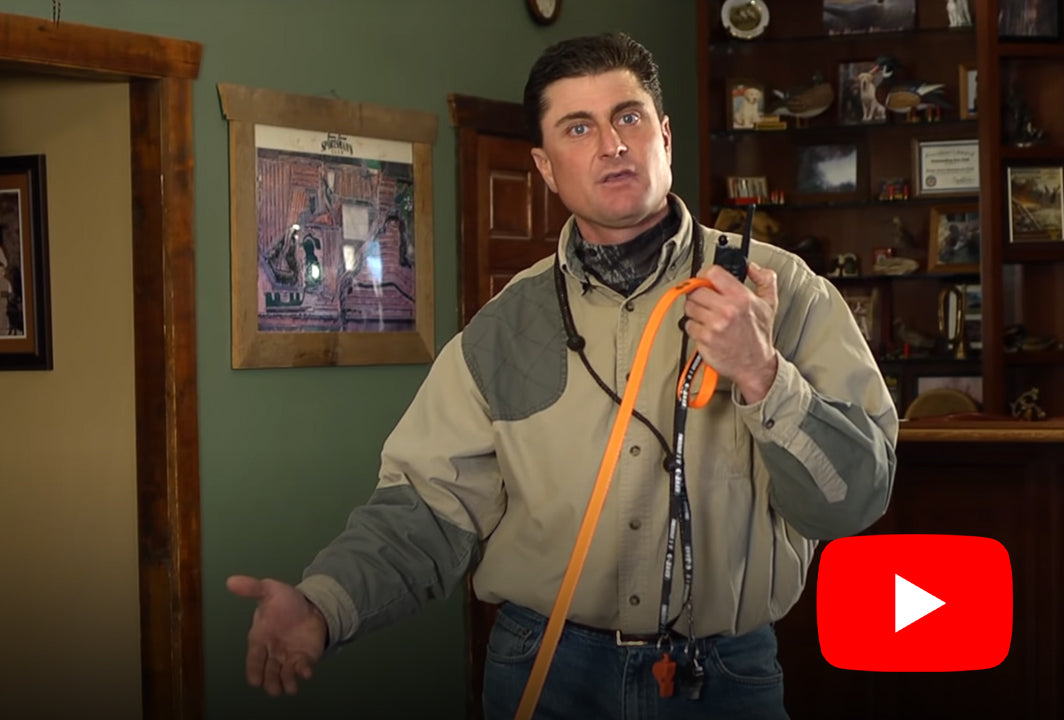How to Introduce Your Dog to the E-Collar, Check Cord, and Formal Obedience
How to use training equipment and techniques to help prepare your dog for formal training!

You begin training your puppy basically as soon as you bring him home with you. And did you know that how you train your puppy while they’re young sets crucial groundwork for training them when they’re older? That’s why you want to get every training step perfect. So, just how do you change your training style from working with a puppy to an adolescent dog?
The transition from puppyhood into adolescence can definitely be difficult and stressful, but fortunately, there are training equipment and methods that help make this transition easier for you and your dog!
Use The Right Equipment
Like any process, having the right training equipment makes it much easier. And one of the best tools that you can use for transitional training is a choke chain!
Choke Chain
What exactly is a choke chain? This is a collar made of metal links that is designed to control your dog by tightening around his neck when you pull it. Used correctly, it’s a great training tool for negative reinforcement as it can be uncomfortable for your dog; however, make sure to never seriously hurt your dog using this.
For training, it’s helpful to use a choke chain so that you can increase the level of pressure rapidly and easily. It allows you better precision and more intensity when needed!
E-Collar
Another important piece of dog training equipment is an e-collar. Using this collar and the choke chain together helps bring your dog to the next level of understanding.
Once you begin using the collar, it should be on your dog every single time you take him out. This will build an association between the collar itself and him going out and having a good time!
And it will ensure that your dog never associates it with negative reinforcement. By the time you do start using the e-collar's nick and continuous function, your dog will only associate positive things with the collar, so he won’t make any negative associations with it.
Stairstep Concept
At this portion of training, you should be performing all the tasks in the same general way. Now, you’re going to introduce a couple new concepts, one of which is the stairstep concept.
With the stairstep concept, you’re simply going to increase the level of negative reinforcement every time your dog has a sequential failure. Meaning that if your dog continues to do the wrong thing, then the pressure increases each time. Keep doing this until he succeeds.
This is why it’s called a "stairstep" concept, as the negative reinforcement escalates every time he does the wrong thing. When he does succeed, give him a treat, then change subjects and move on! Every time you do this, your dog will progress mentally. This helps him understand the command and the consistency, which are so important for him to have. Next, you’re going to introduce the vibration concept with the e-collar!
Vibration Concept
Begin introducing the vibration from the e-collar with a pull on the lead. This quickly helps your dog begin to associate these feelings together. Now, you’re going to incorporate all of these elements together. You’ll use the stairstep method with your dog by using the choke chain and vibration feature. For this to work, timing is everything. Keep the transmitter for the e-collar in your hand when you're doing this so you can get the timing perfect.
The way that you hold the lead will also help you be successful in getting the right timing with your dog. Begin with the sit command, and if he makes a mistake, use reinforcement by doing an upward pull with your lead. If he fails repeatedly, you're going to increase the pressure a small amount every time and work towards success. Remember, the most important thing is to always end your training with success.
Using Commands with Vibrations
You can also use the e-collar’s vibrations to help your dog associate verbal commands with the lead. You’ll do this by keeping your finger on the vibration function, and every time you pull the lead, press the button for the vibration. You can do a horizontal pull for the heel command if he makes a mistake. And while doing this, remember to hit the vibration function every time you pull the lead! For the recall, you’ll use the same method. Your transmitter will be in your right hand, and you’ll pull up the lead with your left hand. Remember, if your dog has success and does it perfectly, you're not going to use any negative reinforcement!
How to Train Using a Check Cord
Another important piece of training equipment is a long check cord. This is an especially helpful tool during the transitional training phase.
We recommend using the DT Systems check cord; it's orange in color, so you can see it when you're working in the field, and it’s also very easy to work with!
When you move over to using the check cord, you’re going to go ahead and put the transmitter around your neck so you have both hands free. At this point, you’re not even going to focus on the vibration anymore because there's too much going on with our hands. It would be too hard to accomplish. Simply focus on using the check cord for training and implement positive or negative reinforcement when needed!
Commands with a Check Cord
Only work on two commands when you’re using the long check cord. The first one is the sit-stay command. For this command, the way that you handle the lead is going to be your secret to success. Don’t pull on the lead at all, but also make sure you don’t have a lot of slack buildup! If your dog moves, this will allow you to make a quick and concise correction.
The other command to work on while using a long check chord is recall. With the recall, you can either call your dog from a distance when he's not sitting, or you can call him from a distance when he's out moving about.
It’s recommended to split these calls about 50/50. So, 50% of the time, call him with the sit command, and the other 50% of the time, release your dog, letting him wander out, then call him back! With the use of this new training equipment and techniques, your dog will become prepared for what he's going to see in the next stage of his life when it comes time to do formal training.
Remember, every step of the training process in your dog’s life is very important. And always work towards success!




